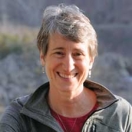
Nearly half of Native American people (42 percent) are under the age of 24; more than one-third of Native children live in poverty; and Native youth have the lowest high school graduation rate of students across all schools, according to a recent White House report.
Last week, I visited Riverside Indian School in Anadarko, OK, a school operated by the Department of the Interior's Bureau of Indian Education (BIE), to meet with students and school officials, tour the facilities, and host a roundtable discussion. Most importantly, I wanted to hear from kids and families about what's working and how we as a federal government can better serve tribal communities. As we know, the best ideas rarely come from Washington, D.C., but instead from local communities responding to local challenges. The visit was part of the President's Generation Indigenous ("Gen-I") initiative to remove barriers and ensure that all young Native people can reach their full potential.
I was also excited to discuss the White House Rural Council's efforts to reduce rural child poverty in the Anadarko community. In March the White House Rural Council launched "Rural Impact," a coordinated effort across the federal government to improve quality of life and upward mobility for kids and families in rural and tribal communities.
At Riverside, I heard from young people and community leaders about challenges participating in federal nutrition programs and health services. In rural places, families often lack access to preventive health care, as well as school and summer meals. Rural Impact is tackling these barriers head on -- increasing the number of rural sites for summer meals delivery, targeting outreach for Community Eligibility Provision to rural schools, and investing in technology to improve access to critical health services.
Perhaps the most frequent refrain I heard was the importance of partnership. When it comes to government programs, there is no ‘one size fits all.’ That's why I'm particularly proud that this Administration goes to the source -- collaborating with communities to solve local problems. At our meeting last week, a representative from the Choctaw Nation, which last year was designated as the first tribal Promise Zone, said that the Promise Zone Initiative has opened up new lines of communication between community and the federal government that had never existed before. With persistent limitations on fiscal resources, partnerships are crucial to solving problems.


